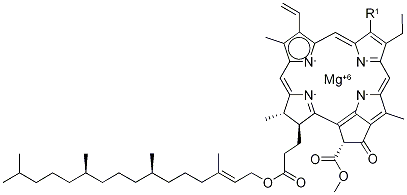CrWRKY42 Transcription Factor: Key to Citrus Fruit Coloration
Chlorophyll is a type of green pigment contained in higher plants and all other organisms that can perform photosynthesis. There are many types of chlorophylls, such as chlorophylls a, b, c and d, as well as bacterial chlorophylls and green bacteria chlorophylls. The common feature of their structure is that they include a porphyrin ring composed of four pyrroles, and the four pyrroles are combined with the metal magnesium element. Chlorophyll absorbs most of the red and purple light but reflects green light, so chlorophyll appears green, and it plays a core role in the light absorption of photosynthesis. Chlorophyll exists on the thylakoid membrane in the chloroplasts of leaves.
Citrus trees hold a position of immense significance in global agriculture, not only due to their widespread cultivation but also owing to their substantial industrial and economic contributions. The visual appeal of citrus fruits, notably their color, plays a crucial role in consumer preference and marketability. This color is primarily determined by the presence and balance of two pigments: chlorophyll and carotenoids. The intricate processes governing the degradation of chlorophyll and the biosynthesis of carotenoids are complex metabolic pathways. These pathways involve a multitude of genes, regulatory nodes, and various influencing factors that come into play, making the study of these processes highly challenging yet fascinating.
As citrus fruits ripen, the breakdown of chlorophyll and the production of carotenoids typically happen in tandem, resulting in the vibrant hues that citrus fruits are known for. Despite progress in understanding the individual metabolic pathways, the precise coordination at the transcriptional level—the very level where DNA is transcribed into RNA—remains an area ripe for exploration and discovery.
In a groundbreaking development, recent research has delved into the role of a particular transcription factor, CrWRKY42, which has been identified as a critical player in the coloration process of citrus fruits. This transcription factor appears to act as a conductor, orchestrating the simultaneous regulation of both chlorophyll degradation and carotenoid biosynthesis. By influencing these pathways, CrWRKY42 facilitates the transition in fruit color as they ripen, enhancing their visual appeal and, potentially, their nutritional value.
The study investigating CrWRKY42 sheds light on its molecular mechanism, revealing how it interacts with different genes to promote fruit coloring. This comprehensive analysis not only deepens our understanding of the genetic and biochemical foundations of citrus fruit coloration but also opens up new avenues for agricultural innovation. By leveraging the insights gained from this study, scientists and agriculturalists can explore genetic engineering or selective breeding strategies aimed at improving citrus fruit color quality. This, in turn, can lead to fruits that are not only more aesthetically pleasing but also potentially more nutritious and market-friendly.
The findings from this research provide a robust theoretical framework and a valuable genetic toolkit for future endeavors aimed at enhancing the color quality of citrus fruits. Such advancements hold promise for boosting the economic value of citrus crops, contributing to food security, and meeting the evolving preferences of consumers worldwide.
This study discovered a WRKY family transcription factor CrWRKY42 involved in the color change process of citrus fruit. Overexpression of CrWRKY42 in citrus callus significantly upregulated the expression of multiple carotenoid biosynthesis genes such as phytoene dehydrogenase (CrPDS), lycopene β-cyclase (CrLCYB2) and β-carotene hydroxylase (CrBCH1), and the carotenoid content increased significantly. Interference with CrWRKY42 in citrus callus significantly reduced the total carotenoid content and inhibited the expression levels of multiple carotenoid synthesis-related genes. In addition, transient overexpression and interference of the CrWRKY42 gene in citrus fruits revealed that CrWRKY42 can simultaneously activate the expression of key genes for chlorophyll degradation and carotenoid biosynthesis, synergistically regulate two metabolic pathways, and thus promote the color change of citrus fruits. The results of biochemical experiments showed that CrWRKY42 can directly bind to the W-box element on the CrBCH1 promoter and activate its expression. Further studies found that CrWRKY42 can also directly bind to and activate the promoters of multiple chlorophyll degradation and carotenoid biosynthesis genes, including NONYELLOW COLORING (CrNYC), STAY-GREEN (CrSGR), CrPDS, and CrLCYB2.
In summary, CrWRKY42, as a direct positive regulator of chlorophyll degradation and carotenoid biosynthesis, plays an important role in the coloring process of citrus fruits. The results of this study help to further understand the complex transcriptional regulatory mechanisms of chlorophyll and carotenoid metabolism during fruit ripening, and have guiding significance for the improvement and regulation of fruit color quality.










